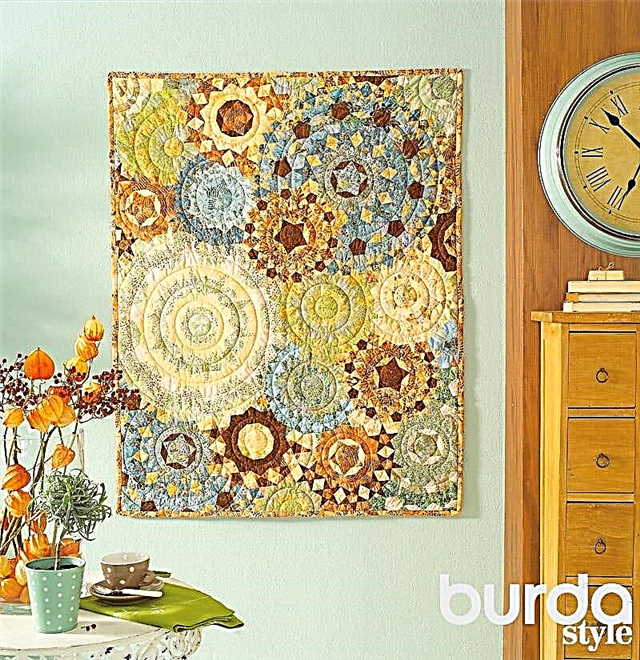Share
Pin
Tweet
Send
Share
Send
This is the only one of all the clothes that can be unconditionally attributed to the field of pure aesthetics. And, even saving her from the cold, she’s still an accessory, another weapon of seduction.
Pashmina from Kashmir
Orenburg feather shawl, Pavlovo Posad bright patterns, ruddy beauties and frosty landscapes. It seems that the shawl is an original Russian invention. This is actually an oriental cloak. The first thin, but very warm shawls were made in the 15th century in Srinagar in the Kashmir Valley. These wide wraps of a woman were folded in a triangle and put on the head, completely hiding the camp under the luxurious Indian fabric. They were made manually from pashmina - wool and fluff of a special breed of Kashmir goats. The work required diligence and talent, and also time: an expensive, complex thing was made from one and a half to four years.Embroidered with gold, decorated with long fringe, precious stones.
The first centuries, only the inhabitants of the East enjoyed this beauty, and then fabrics and products from Kashmiri down appeared in Europe. Fashion historians believe that this happened with the easy hand of Josephine Beauharnais. Many wonderful shawls brought Napoleon from the Egyptian campaign as a gift for her. Josephine admired the gift and began to use beautiful scarves in dresses and in the interior. Soon fashion from France spread throughout Europe. The beauties thought that the delicate bedspreads would perfectly complement dresses with high waist, neckline and small sleeves - a “cold fashion” in the Empire style. At that time, they were also appreciated by men: Byron and Stendhal practically did not part with the shawl, naturally, in its masculine decorative version.Russian pride
The first Russian shawls in the complex technique of bilateral weaving appeared only at the beginning of the XIX century. Masters on the basis of oriental drawing created unique compositions in their national style. And Russia began to export shawls - first to the East, then to the West. Made by the hands of serf girls in the workshops of the Nizhny Novgorod province, our shawls were not inferior to the Indian ones in quality: light and warm, with woven, embroidered or printed patterns. Drawings repeating the murals of Berlin and Vienna porcelain gave the shawls a special sophistication. The workshops of the landowner Merlina were famous for this, and 60 craftswomen worked for her. But in one year they produced only 16 shawls and 5 scarves. A thread of 4.5 m long was made from 13 g of down.The work was hard and painstaking, and by the age of 30, the craftswomen often went blind.
Kupavinsky shawls made at the factory of Prince Yusupov were worn only by rich merchants: one cost as much as 200 rubles. - The annual salary of the factory worker.
Of woven shawls, products from Pavlovsky Posad were in great demand. Knitted shawls from goat down became famous Orenburg region. According to legend, the first was presented to Catherine II by a Cossack craftswoman. The queen was amazed at the skillful work, generously awarded the girl, and this shawl became the most beloved of all the imperial cloaks.
Since the mid-19th century, Orenburg down products have been awarded medals annually at world exhibitions in London, Chicago, and Brussels. Lungs, like a cobweb, they struck not only with beauty, but also with subtlety - they could be dragged through a ringlet or placed in an egg shell.
In the 1830s, woven shawls with a bright printed ornament and silk embroidery appeared. And a little later, when the production of printed shawls was already established at many manufactories and factories, they began to be worn not only by noble women, but also by women of the middle class and even the peasant class.
The ability to wear shawls in Russia began to attach great importance. During the reign of Alexander I, pupils of women's educational institutions taught dance with a shawl. So the girls showed their grace, grace and good posture. This tradition has been preserved until the end of the 19th century.Fashion accessory
Nowadays, shawl has become a fashion accessory. They put a bright one on the shoulders to make the modest outfit more expressive, woolen - to keep warm on cold days, chiffon or silk carelessly - for chic.In modern shawls, silk is interwoven with linen, and cashmere and silk - the "royal" composition makes each thing unique and luxurious. Fashionable corrugation gives the scarf a slightly whimsical character. Exclusive, as expected, represent the famous brands. Synthetic threads can be added to more democratic shawls, creating an almost complete illusion of chiffon and natural silk. And finally, you can tie the shawl itself - manual work will always be appreciated.
Popular designers paint watercolors on silk, or turn to exquisite Japanese motifs, or demonstrate their commitment to the avant-garde, to geometric patterns, to leopard colors ... Yes, and ethnicity never left fashion catwalks.
Many overseas stars adore shawls: Helen Mirren and Holly Berry, Jodie Foster and Oprah Winfrey ... Well, Russian motifs are now at the pinnacle of popularity both in the Old and New Worlds. So, the big fashionista Gwen Stefani wears a Pavlovo Posad shawl. And any Hollywood star who comes to Russia considers it his duty to acquire several Russian shawls. Models, actresses, and popular singers, and millions of grandmothers unknown to anyone are wrapped in this scarf. Probably, only about the shawls can we say that this thing will never change, but at the same time, paradoxically, it will never go out of style. Therefore, when once again, preparing to meet friends, you will sadly understand that there’s absolutely nothing new to put on, take your favorite shawl, throw it and look in the mirror - you will see a beauty there!
 The article was published on the materials of the magazine "Good advice" 11/2013
The article was published on the materials of the magazine "Good advice" 11/2013Photo: PR
Material prepared by Julia Dekanova
Share
Pin
Tweet
Send
Share
Send







